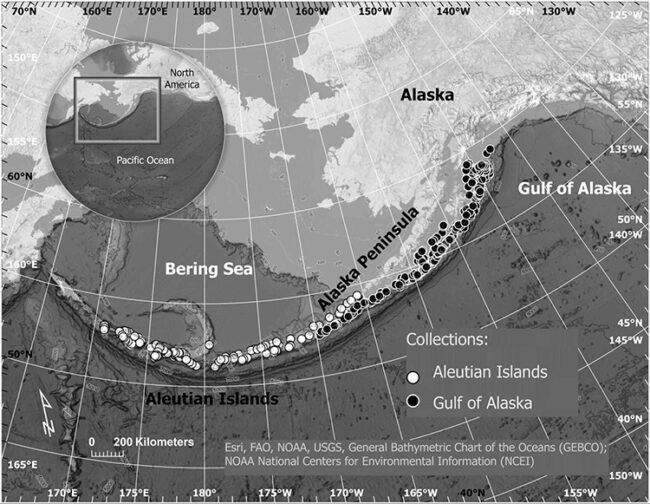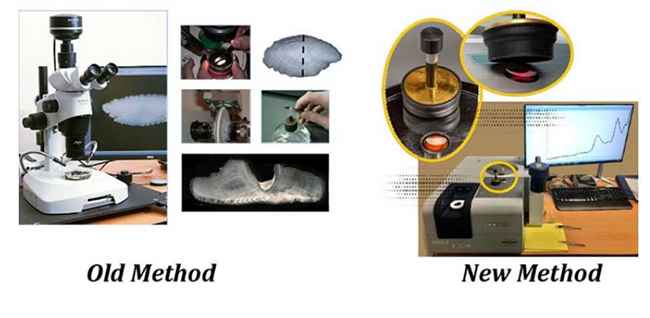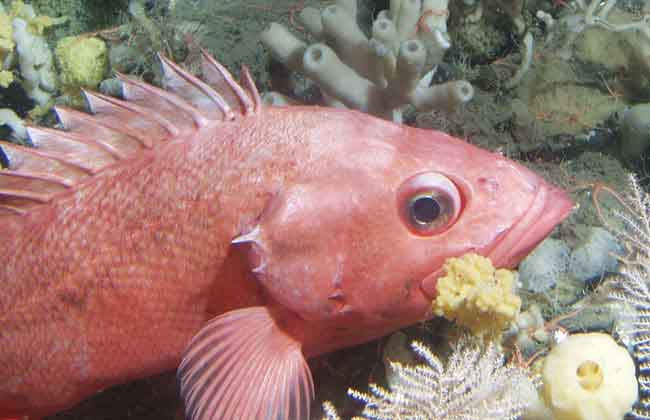Scientists are able to evaluate more data in less time to support sustainable Alaska Fisheries.
Scientists demonstrate that an innovative technology to scan fish otoliths (ear stones) coupled with trained computer models can determine rockfish ages as well as humans, and even more quickly.
This technology, Fourier-transform near-infrared spectroscopy, examines the unique vibrations of molecules in otoliths, especially the way they absorb near-infrared light, to gather detailed chemical information related to fish age.
In this study, NOAA Fisheries scientists used this near-infrared technology in combination with a type of machine learning called deep learning. This is a method of artificial intelligence that teaches computers to process data in a way that is inspired by the human brain. Deep learning models can recognize complex patterns in pictures, text, sounds, and other data to produce accurate insights and predictions. In this case, scientists used the technology on fish otoliths and integrated it with information on fish length, fish sex, otolith weight, and geographic coordinates to predict rockfish ages.
In the Age and Growth lab, a common method to determine the age of a fish is to extract otoliths from fish and use various techniques. This includes cutting, burning or baking, to make the growth rings in the otoliths more prominent. Scientists then use a microscope to count the rings to estimate the fish’s age. However, using near-infrared technology with deep-learning to estimate fish ages improves precision. It also enhances efficiency compared to ages generated by humans.

“The northern rockfish is an economically valuable, long-lived species distributed over the continental shelf of the North Pacific Ocean. It is estimated to live to 80 years and older,” said Irina Benson, a scientist with the Alaska Fisheries Science Center’s Age and Growth Program. “Understanding the age structure of northern rockfish populations is essential for effective fisheries management. It helps in assessing the health of the population, setting sustainable catch limits, and developing conservation strategies to ensure the long-term viability of these fish in Alaska waters.”
Previous studies have demonstrated the success of using this near-infrared technology to determine the age of species like walleye pollock and Pacific cod.
“However, up until now, applying the deep learning approach to otoliths of such a long-lived species hasn’t been attempted,” said Tom Helser, Age and Growth Program Manager.
Long-lived rockfish require more resource-intensive methods to determine their age than short-lived groundfish. This is because age estimation efficiency varies by species’ maximum age, processing method, and reading difficulty.
Accurately determining the age of northern rockfish can be challenging due to various factors such as:
- Potential breaks in the otolith rings
- Variations in growth rates influenced by environmental factors, like temperature and food availability
- Potential difficulty in distinguishing annual rings, especially in older individuals where the rings may become more compressed
Different age readers might interpret the same otolith differently, and even the same reader might produce inconsistent results over time. Quality control procedures, including re-evaluation of a certain number of specimens by independent experts, are crucial to estimate age reading precision and minimize errors that affect management indicators.
All of this takes time. Annually, this meticulous and resource-intensive process is used to generate millions of age estimates to provide critical data for assessing global fish stocks. Thus, alternative methods are needed to reduce the substantial resources expended by governmental and other agencies to produce fish age data.
In this study, Benson and the team used deep learning to look at 2,613 otolith scans using near-infrared technology and associated data, such as fish length, sex, and geographic coordinates to predict ages of northern rockfish otoliths collected during the years 2013–2019. The fish ages ranged from 3 to 66 years. They compared predicted ages to traditional microscope-based ages and found them to be consistent.
Scientists have successfully demonstrated the effectiveness of using this innovative approach for aging long-lived northern rockfish. Achieving accurate and efficient age estimations could significantly impact fisheries management practices by enabling a greater number of age estimates, leading to improved assessments of fish stock health. Ultimately, this could contribute to the long-term viability of northern rockfish populations in Alaskan waters and potentially serve as a model for other long-lived fish species.
[content id=”79272″]








